COVID-19 has caught the world off-guard. The turbulent time we are passing through right now has not been witnessed since the Second World War. This unforeseen virus has brought the world to a standstill and the implications it will have on our future is still something that is yet to be comprehended. One thing looks certain: Uncertainty looms large. But, let us pause for a moment and introspect. This pandemic has given us ample time to look inward, develop our potential, our forgotten humanism, reduce consumerism and reduce cut-throat competition. It forces all of us to move into a more cooperative and considerate planet. It looks like nature is telling humans to wake up and stop playing dirty games against each other in the name of race, class and religion.
The COVID-19 lockdown has affected the future and livelihood of millions of migrant labourers. They have been forced to return to their roots and look for livelihood opportunities in villages and towns. Holistic rural development through various models will help in reverse migration and equitable distribution of the available resources
From destruction comes creation. Many countries were completely left devastated and razed to the ground by the time World War II ended. People were left without food and water. Yet, these same countries rose from the ashes and were reborn as places of prosperity and booming economies. Coming to the present situation: This is nothing short of a world war, a weaponless war which has left a devastating effect on the entire human race. No country is left unscathed. But we are confident that the world will bounce back, people will become better and will make the world a saner, serene and a more compassionate place to live.
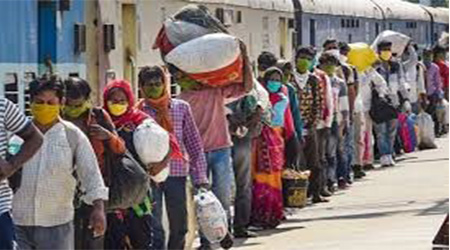
The COVID-19 lockdown has affected the future and livelihood of millions of migrant labourers. They have been forced to return to their roots and look for livelihood opportunities in villages and towns. This is a very good prospect for the government to provide openings to them in their home towns through financial inclusion, setting up of micro, mini, small enterprises and revamping the public health systems. This would not only help in decongesting cities and easing the pressure on various civic amenities but also revive the environment and ecology which has been affected by the demographic pressure on the natural resources. Holistic rural development through various models will help in reverse migration and equitable distribution of the available resources.
Effect on Environment and Eco-Systems
This pandemic has not only changed the habits and lifestyles of different societies and countries but also brought introspection in individuals on their concept of life, consumerism and social behaviour. Governments of many developing countries were spending a huge amount of funds to change the social behaviour of the people – be it public health, sanitation, environment and ecology. This pandemic has not only changed the social behaviour of the people but Mother Earth has demonstrated that human beings are not necessary for its survival. The air, water and sky are fine without us. The environment does not need us; rather it is the other way around. This pandemic has, within a short time, pressed the reset button. Results are already being seen all around the world; something we, as humans, have not been able to do. The quality of air, water in rivers, streams and lakes have improved, and ecological corridors which were segmented due to developmental and human activities are opening up again. Flora and fauna have started reclaiming their natural habitat in different eco-spaces. We have witnessed how migratory birds like the flamingoes have arrived in large numbers in various wetlands and wild animals are moving freely in some of the spaces vacated by us.
Perspective of Economic Growth
Different theories are doing the rounds with regards to the mutation of the virus, its relapse and how it will unfold in the future. It is estimated that the world GDP may decline between 1.9 to 7.1 percentage points. Until we can find a cure and develop a vaccine, this uncertainty will take its toll on the economic growth and social fabric of the country. Different governments are trying to cope with this crisis through various strategies – up-gradation of public health facilities, social and physical distancing through lockdowns, quarantine, testing and treating individuals affected by it.
Compared to other countries, the spread of the virus in India has been controlled due to the late entry of the virus, the various preventive actions taken by the government and also learning from the response of other countries affected by it.
This pandemic is not going to end soon. It will bring about a complete change in the way we look at economic growth from the concept of consumerism and self-appeasement. This virus has forced us to pay heed to the growing inequalities and realise the value of the migrant, the unserved and the poor people living at the bottom of the pyramid. These are the people who moved the city where the affluent, rich and the white-collar job people thrived. This pandemic will force us to think of building a fair world where living spaces in cities are not claimed by a few privileged but also the marginalised, poor and deprived sections of the society. There is a need to look at the economic growth from a new perspective and develop models which can help us tide over the uncertainties created by COVID-19.

India has the second-largest population in the world with a gender ratio of 943. While there is an incredible diversity on the cultural front arising out of several different factors, it also means there is a wide disparity between States and regions. This inequality extends to the healthcare sector as well. According to the 2019 data, there are about 23,582 government hospitals in the country with 19,810 hospitals in rural areas and 3772 hospitals in urban areas. Hospitals in rural areas have 279,588 beds while in urban areas the total number of beds is 431,173; bringing the total number of beds to 710,761.
The existing Government health facilities are grossly inadequate and accessible to a few people living in cosmopolitan cities. There has been a great proliferation of private health facilities in urban areas and the Indian private health services have become a major business in the world via medical tourism due to the many super-speciality services and affordable costs. As medical tourism is thriving in the cities, the rural areas and its inhabitants are left unserved. Only half the beds are available in hospitals as compared to urban areas, and there are barely any worthwhile facilities in terms of specialised or super-specialised hospitals. The government is spending only 1.5 per cent of the GDP on public health, which is one of the lowest in the world. There is only one doctor for 1500 people as against the UN norms of 1:1000 in urban areas. In rural areas, this ratio goes down to 1:8000. Thus, the government has to think of measures to reach the rural areas by providing these services and making use of technologies to include telemedicine centres, extension of community health outcomes and enhance the supply of doctors.
The public expenditure on health has to be increased in a gradual way to a minimum of six per cent of the GDP. The Ayushman Bharat has impacted a lot of families and the coverage has to be increased substantially. As of July 2019, around 125.7 million families have enrolled as beneficiaries under the Pradhan Mantri Jan Arogya Yojana (PMJAY). The scheme has enrolled 16,085 hospitals, including 8,059 private hospitals and 7,980 public hospitals.
In the new world order, public health will pose new challenges and create business opportunities as well. This pandemic will require a high level of public health preparedness in the rural areas and the focus will have to shift from prevention to cure. After the first wave, there are chances that it may convert into a different type of flu. We need to ensure immunity-boosting through development and propagation of different medicine and alternate healthcare systems like AYUSH. For Stage 2 and 3, we will require more beds and testing facilities as well as ventilators. Pneumonia and diarrhoea have been challenges which the country has been dealing with for decades. We have been able to control and eradicate smallpox and polio. We will be able to find a cure for this virus as well.
We have to look at innovative developmental models in Tier 2 and 3 cities till this period of uncertainty is over and till the time we can find a cure or a vaccine for the epidemic. We have to look after these marginalised and unserved people and create job opportunities for them in rural areas, hinterlands, small towns and villages. This is only possible if we can ensure financial inclusion of the rural sector.
Reverse Migration
The data on migration in India as per the 2011 Census shows that the total number of migrants is 177 million. Out of these migrants, 56 million (32 per cent) are intra-state migrants, who migrated from one State to another. With most of the migrants and people living on the edge eagerly looking forward to moving back to their native villages, this country will see a wave of reverse migration which has been in discussion for quite a while now. Most of the intellectual debates on the development of urban areas, cosmopolitan/metropolitan/smart cities, hyper malls will be facing difficulties due to social/physical distancing and absence of these faceless people who have been performing mundane jobs. We will realise the value of these migrant labourers working in farms, factories and urban areas and value their vocational and entrepreneurial skills. Many of the comforts which we took for granted like civic services, water and sanitation, waste management, security, manual scavenging, etc. will force us to develop a new understanding and respect for them and make us realise how important they are to the smooth cycle of life. We had a very cynical view of them and were least bothered about how they lived and survived. This crisis will bring a behavioural change and make us more empathetic and sensitive towards these people, till the time a solution or cure is found. It may be business as usual thereafter. If we can ensure employment and livelihood for them in their villages, it would be a golden opportunity to work towards decongesting our cities and while at the same time ensure the development of rural areas.
We have to look at innovative developmental models in Tier 2 and 3 cities till this period of uncertainty is over and till the time we can find a cure or a vaccine for the epidemic. We have to look after these marginalised and unserved people and create job opportunities for them in rural areas, hinterlands, small towns and villages. This is only possible if we can ensure financial inclusion of the rural sector.
Financial Inclusion of the Rural Sector
The industrial sector of the economy is one that makes finished products which can be utilized, viz, construction and manufacturing industry. This sector is one of the pillars of the economy. With a slowdown of this sector due to reverse migration, in the interim, the government needs to shift focus and ensure financial inclusion of another important economic pillar – the rural sector.
The Government has opened more than 350 million Jan Dhan (PMJDY) accounts in banks so that the benefits of various government schemes can reach the beneficiaries directly. Though these accounts were opened, not many meaningful transactions have been carried out and they have not been operating successfully. They are being used for claiming subsidy or financial assistance from existing government schemes. The Government needs to prioritise financial and digital literacy training in rural areas so that the PMJDY accounts could serve its full potential and contribute to building financial resilience of low-income people. Direct Bank Transfer should be leveraged not only for government fund transfer but also for inculcating savings and developing a habit for network usage. This should be used by financial institutions like banks, MFC, NBFC and Fintech companies. A wider range of financial and non-financial services should be provided through this channel.
There is a need to have more business correspondents (Bank Mitras) and also invest in their capacity building so that they can fulfil this critical gap in access and ensure financial inclusion.
The Government has also announced that during the COVID-19 crisis, a sum of Rs 500 will be credited every month to every account for the next three months, but the problem the rural population is facing is accessibility. Currently, there are 2,20,000 ATMs installed in the country, out of which 1,20,000 are on-site and 1,00,000 are off-site ATMs. Most of the on-site and off-site ATMs are in the bank branches only. As a result, approximately only 20,000 ATMs are available in off-site areas. Though money has reached the bank account of the people in the rural areas, withdrawing cash hits a roadblock due to a shortage of ATMs.
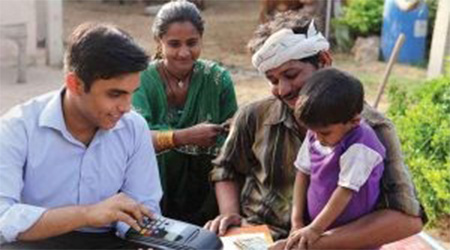
There is a need to have more business correspondents (Bank Mitras) and also invest in their capacity building so that they can fulfil this critical gap in access and ensure financial inclusion. The second phase of bank inclusion has started, but steps have to be taken for last-mile connectivity by ensuring that rural India has access to ATMs as do the urban population. If a person living in a village has to travel 20 km to access an ATM for cash withdrawal, then the cashless/digital payment that we are dreaming of will never happen. He is likely to withdraw the entire amount. The concept of savings, holding cash and utilising it for other services will not hold sway in his mind. The Jan Dhan accounts are a cornerstone for financial inclusion, and with JAM – Jan Dhan, Aadhar and Mobile integration, the possibilities for uplifting the people in the rural areas and ensuring that they have access to credit and other financial services is a very big opportunity. This is especially so with the migrant people moving back and looking at alternatives for various livelihood and employment opportunities.
There is a requirement of two ATMs in each village and government funds are available for establishing these Micro ATMs. The RBI has also come out with a list of locations in the country where they can be established along with funding mechanism. These ATMs should be established in suitable locations in villages like milk cooperative societies, farmers clubs, schools, etc. There is also the need for a robust digital platform by proper linkage of the Aadhar and mobile to leverage the drive for financial inclusion leading to resilience.
Role of Micro, Small and Medium Enterprises (MSMEs)
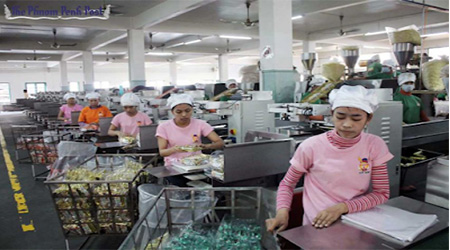
MSMEs are another pillar of economic growth for promoting equitable development and employment. The labour intensity of the MSME is much higher than that of large enterprises. They constitute over 90 per cent of the total enterprise in most of the economies and are credited with generating the highest rates of employment growth and accounting for a major share of industrial production and exports. They have been severely affected due to an unprecedented demand crash because of the extended coronavirus-led lockdown.
Most of them have exhausted their funds or are close to doing so. The government has barred e-commerce companies from selling non-essential goods because of the pandemic. While it has allowed standalone shops to begin operations in a limited way, the extent to which this will help business revive will depend on individual States. Many units have paid their workers’ wages till March and these units are facing problems to pay their electricity and water bills. There is a government mandate to keep paying salaries and wages to staff, but without revenue or substantial government support, there is no way they would be able to survive in future.
There is an urgent need to provide them with assistance so that they can re-start their business and invest in their upskilling as per the changing needs of the economy. The support for the MSMEs has to be in the form of low-priced loans with at least six months moratorium. These loans from the banks/MFIS need to be guaranteed by the government so that credit access could be easier. The multiplier effect of the investment in MSMEs is immense as they are the engines of economic growth and activity. Many MSMEs who had to close down due to the lockdown will also need a one-time capital injection in the form of grants since their financial situation is in a pretty bad condition right now, and without a capital grant, many of them will have to wind down, creating a massive wave of
Some Models of Financial Inclusion
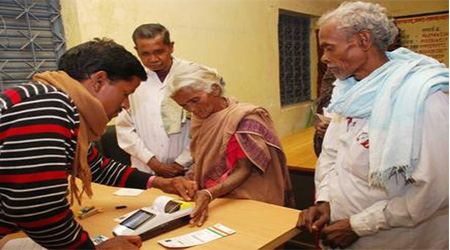
For holistic development in rural areas, we have to ensure that the rural population has access to finances and can have sufficient cash for carrying out their activities like farming, poultry, animal husbandry, micro and mini enterprises, etc. One of the promising models created is Avanti Finance by the Tata Group. This is an NBFC for financial inclusion of the underserved and unserved people in rural areas. This is an open-access digital financial spine, flexible enough for users and partners to create, curate and deploy financial products through a touchless, cashless and presence-less interface with the users. Avanti works through local NGO partners who are part of the local community and create loan products as per the needs of the community. Technology is used for underwriting, and the loans are self-moderated by the community. They can fulfil the entire needs of the community and aim to provide access to credit and affordable financial services promptly to service 100 million households.
Another very promising model has been developed by Grameen Foundation which believes that poor people do not just lack money, but also access to information and resources. They feel that people will be able to overcome poverty and hunger if there are tools and resources which can help people help themselves. Grameen uses digital technology and data to understand the financial status of very poor people. They offer them the entire ecosystem of agencies and actors, surrounding them with empowering tools that meet and elevate their everyday realities. They work through a network of Grameen Mitras who are local women from the villages. They empower them through financial education and digital tools, who in turn give access to banking, retail, insurance, agriculture, health and education services to low-income people for a small fee. They have been able to tie up with various banks, financial technology platforms and institutions for marketing their products designed for rural areas.
There is a need to invest in such models so that they can be scaled to benefit hundreds of millions of poor people all across the country.
Social Inequalities
The present pandemic has also made us introspect on how we can build a fair world and a fair society. The growing inequality in the country makes us think about these migrants and poor people who could not survive even for four days during the lockdown. People were walking for thousands of miles with their families to reach their villages and hometown, some of them losing their lives in the process. The Government’s decision to impose a lockdown without providing adequate time for people to reach their villages was an unfortunate one. The affluent and rich were able to bring back their children from abroad in private aircraft or special flights arranged by the Government, while the millions of poor migrants were left at their own mercy with no one providing them help or a solution.
It is a matter of introspection that the top ten per cent of the Indian population holds 77 per cent of the total national wealth. 73 per cent of the wealth generated in 2017 went to the richest one per cent, while 67 million Indians who comprise the poorest half of the population saw only a one per cent increase in their wealth. There are 119 billionaires in India. Their number has increased from only nine in 2000 to 101 in 2017. Between 2018 and 2022, India is estimated to produce 70 new millionaires every day. Billionaires’ fortunes increased by almost 10 times over a decade and their total wealth is higher than the entire Union Budget of India for the fiscal year 2018-19, which was at INR 24,422 billion. Many ordinary Indians are not able to access the healthcare they need. 63 million of them are pushed into poverty because of healthcare costs every year – almost two people every second. It would take 941 years for a minimum wage worker in rural India to earn what a top paid executive at a leading Indian garment company earns in a year.
This pandemic is giving us a new direction by reminding us that the time has come to reach out in a common effort to re-unite as one people by joining together to form a common thread of cooperation that will serve to enhance all lifestyles. We have to take a call whether we wish to continue on the same perilous path and do nothing to ease the suffering.
Cooperation at National and Global Level
This pandemic is giving us a new direction by reminding us that the time has come to reach out in a common effort to re-unite as one people by joining together to form a common thread of cooperation that will serve to enhance all lifestyles. We have to take a call whether we wish to continue on the same perilous path and do nothing to ease the suffering. It is now clear that a new direction is needed to move forward in the evolution of our species and not hesitate any longer in enacting what we know to be the truth. If we all think that this is the time for a positive change, then we should support the world community and create a more solid foundation by paving the road towards greater cooperation and trust. I think we have to keep in mind, first and foremost, a sense of urgency to act together.
We need to act collectively at the national and global level through long-term multilateral frameworks and agreements. The global community has to come together to develop a vaccine for the virus than trying to find solutions on an individual capacity. We also need to have processes in place to deal with stress and anxiety through helplines and counselling services. Mental health should also be mainstreamed to ensure physical well-being during this period of social and physical distancing. We have to recognise this and learn to deal with this through de-stigmatisation.
Faith is the first step, and we need to turn inwards to ask what we can do in our personal world for the greater good. In our governance, accountability and transparency will be crucial in matters that involve the welfare of all inhabitants. The realisation that we are all individuals, yet interconnected and part of the bigger story will serve as a guiding light when reaching important decisions. For every individual in a position of wealth and power, a greater awakening or knowing that long term peace and happiness will only be fully realised by following a way that supports all people is what can bring enduring peace and happiness.
ABOUT AUTHOR
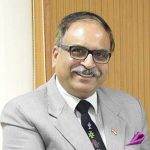
Col Prakash Tewari (Retd) is a Rotary Peace Fellow from Chulalongkorn University, Bangkok, Thailand. A veteran, he is presently a Member, Board of Directors, Social Impact Ventures of Grameen Foundation and Business Consultant /Resource Person for International and National Corporates. He was the Executive Director – CSR of DLF Ltd, Executive Vice President, CSR and Education of Jindal Steel and Power Limited and Head CSR, Rehabilitation and Resettlement of Tata Power Company Limited. He has been heading the sustainability activities of these companies in Asia, Africa, the Middle East and Australia. He was the Vice President and Board of Global Alliance for Disaster Reduction, USA, Member Working Group – Indian Ocean, University of Melbourne, Australia, Chairman – CSR Committee of Bombay Chambers of Commerce and Industry and Ministry representative in the National Board for Wildlife, Indian National Trust for Arts and Cultural Heritage and National Afforestation Ecology Board.